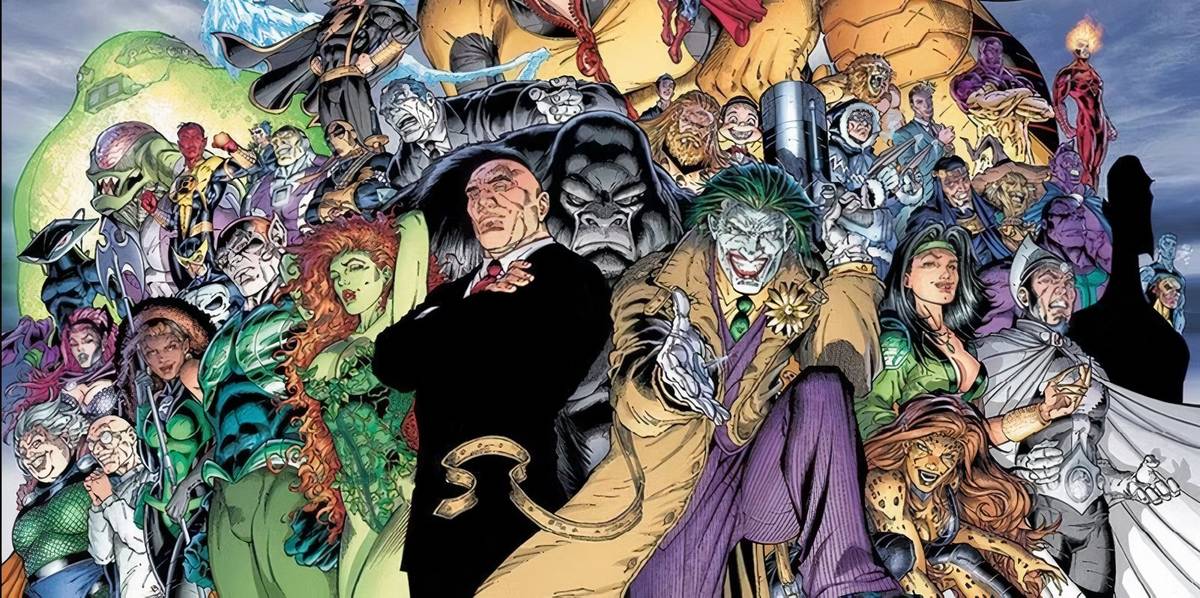[[{“value”:”
WARNING: Contains Potential Spoilers for JUSTICE LEAGUE UNLIMITED #6!
DC may have some of the most iconic villains in pop culture, but that doesn’t mean they’re all aging well. For a while now, fans have voiced growing frustration with characters like the Joker, arguing they’ve become redundant, overly reliant on shock value, or so reimagined they’ve lost what made them great villains in the first place. Now, it looks like DC is finally ready to admit the truth: their classic rogues just aren’t cutting it anymore.
With the list of A-tier villains dwindling, it might be time for DC to seriously consider bringing some new blood into their narratives.
Mark Waid’s “We Are Yesterday” crossover is in full swing, with part two unfolding in Justice League Unlimited #6 by Waid and artist Travis Moore. The event spans both Waid’s JLU and Batman/Superman: World’s Finest, as the Legion of Doom once again sets its sights on world domination and the destruction of Earth’s heroes.
Leading the charge is the Flash’s telepathic nemesis, Gorilla Grodd, who travels back in time to recruit past versions of DC’s most infamous and dangerous villains for his new Legion. Notably, Grodd’s reasoning for turning to the villains of the past, rather than relying on their modern-day counterparts, drives home a hard truth: today’s villains just aren’t what they used to be.
Gorilla Grodd Makes a Valid Point: DC’s Villains Are Past Their Prime
Main Cover by Dan Mora for Justice League Unlimited #7 (2025)
In his internal narration in Justice League Unlimited #6, Grodd admits he knows he can’t take on the League by himself, even after receiving a major power upgrade by acquiring Martian Manhunter’s lost telepathic powers in addition to his own. Despite this, the Flash villain reflects on how difficult it is to find suitable partners to help him achieve world domination. He notes that many of the original members of the Legion of Doom, such as Lex Luthor, Joker, and Black Manta, are now equally useless to him. Grodd explains this by saying, “Some have reformed. Some have degraded. Still others are now too psychotic to be allies.”
Grodd’s point is clear: today’s villains are not what they used to be. He drives this home by stating that he needs “evil in its prime.” His inner monologue reveals a belief that most of DC’s current villains have lost their edge, which is a criticism many fans would likely agree with. Through Grodd, it almost feels as if DC itself is admitting that its iconic villains are no longer as effective or compelling as they once were. As a result, the only way for the Legion of Doom to stand a chance against the Justice League is by turning to villains from the past.
From Joker to Lex Luthor: DC’s A-List Villains Are Dwindling
Cover B Lee Bermejo Variant for Justice League Unlimited #6 (2025)
Gorilla Grodd calling out DC’s villains for being lesser versions of their former selves isn’t just his narcissism talking or an exaggeration. It’s actually a completely valid point. As Grodd noted, many of DC’s A-listers have reformed, with some going beyond simply stepping back from villainy and actively embracing heroism. Lex Luthor, Cheetah, Poison Ivy, Harley Quinn, the Riddler, and others have all experienced some degree of reformation. Poison Ivy and Harley Quinn now function more as anti-heroes than villains, while Cheetah has recently been working alongside Wonder Woman in Tom King’s ongoing run.
Lex Luthor is a unique case. After losing his memories, he genuinely committed to a new path, abandoning his usual schemes and even working with Superman and the Super-Family. Although the events at the end of Superman #25 hint that Lex may be sliding back into his old ways, for now, he remains on the side of the angels. Meanwhile, Batman #159 suggests that the Riddler may also be on his own journey of redemption, having declared himself an ally of the Bat-Family and offering help to Nightwing and Batgirl in their fight against Hush.
Related
The Riddler’s Shocking New Costume Drastically Changes His Character in DC Canon
DC is officially bringing the Riddler back to the forefront of its narratives by debuting a new costume that changes Nygma’s role in canon.
However, reformation isn’t the only factor that has weakened DC’s villain roster. As Grodd also points out, some former allies have simply become too psychotic to trust. This criticism is most likely aimed at the Joker, who has grown more erratic and unstable in recent years. That instability has also made him less competent, as seen in Batman #159, where he is manipulated into becoming a pawn in Hush’s war against Batman. The fact that the Joker is now a pawn rather than a mastermind is a significant blow to his reputation as a top-tier villain. Even Darkseid’s recent death reflects the ongoing decline of DC’s once-formidable rogue’s gallery.
Gorilla Grodd Proves He’s at the Forefront of DC’s A-Lister Villains
Main Cover by Dan Mora for Batman / Superman: World’s Finest #38 (2025)
Gorilla Grodd might not be as prominent as Joker or Lex Luthor in DC’s narratives, but his ongoing role in Waid’s We Are Yesterday crossover has proven without a doubt that he is an A-Lister. He stands at the very forefront of DC’s present-day villains. Grodd hasn’t just held onto his villainous edge over the years; he has sharpened it, becoming more dangerous than ever before. His recent power upgrade has made him one of the most powerful beings on Earth, and he has successfully brought the Legion of Doom back together, making them a greater threat than they have ever been.
What makes Grodd especially compelling is that, even as names like Lex Luthor have fallen off the map of villainy, Grodd remains fully committed to being a villain. This is honestly refreshing. DC has recently shown a growing trend of humanizing its villains, distancing them from their roots in favor of redemption arcs or anti-hero transformations. As a result, the number of former villains now operating as heroes or anti-heroes keeps growing, which slowly diminishes their legacy as iconic threats. That is why Grodd’s unwavering commitment to villainy feels increasingly rare. His refusal to stray from the path of evil is something fans will likely appreciate more than ever.
Cover D Yanick Paquette Variant for Justice League Unlimited #7 (2025)
With the list of A-tier villains dwindling, it might be time for DC to seriously consider bringing some new blood into their narratives. While DC isn’t a stranger to introducing new villains, these characters typically don’t last beyond the run of the creative team that introduced them. That’s why DC needs to seriously commit to developing new villains, with the goal of turning them into lasting staples of their universe, especially if the plan is to keep moving so many iconic villains into anti-hero or full-blown hero territory. However, if DC isn’t ready to make that kind of long-term investment, they could also look at promoting some of their B and C-list villains to the spotlight.
JUSTICE LEAGUE UNLIMITED #6 is available now from DC Comics!
“}]] Even DC knows their villains aren’t cutting it anymore. Read More

